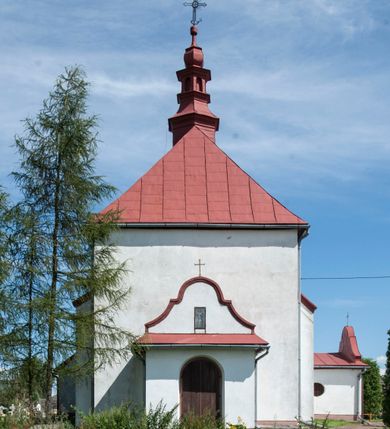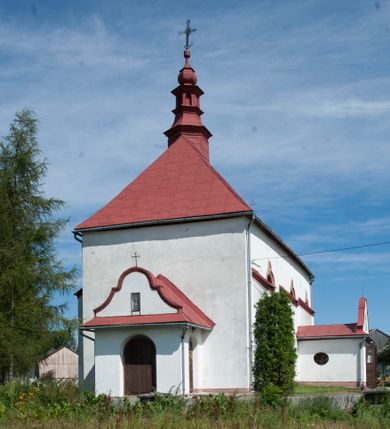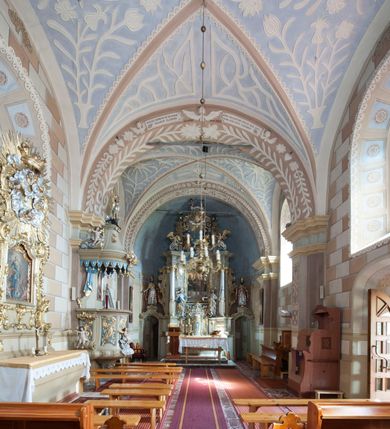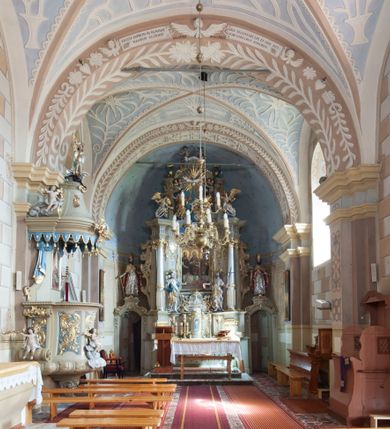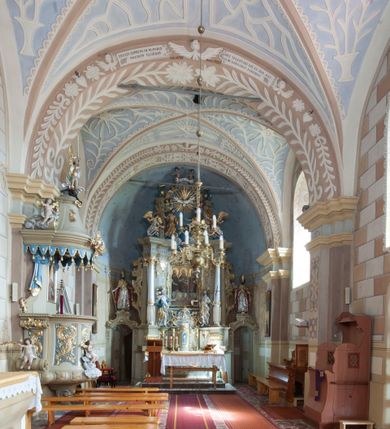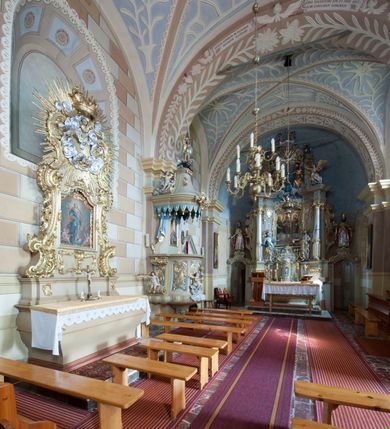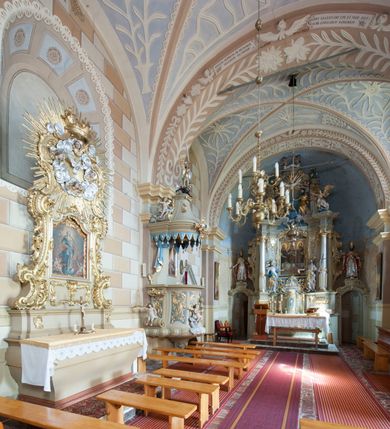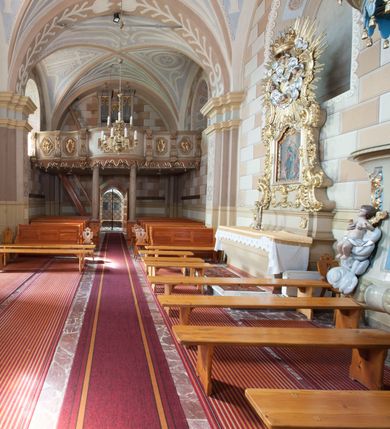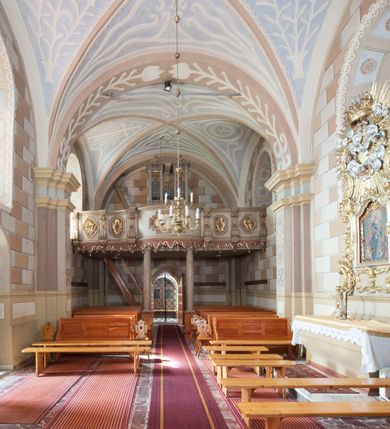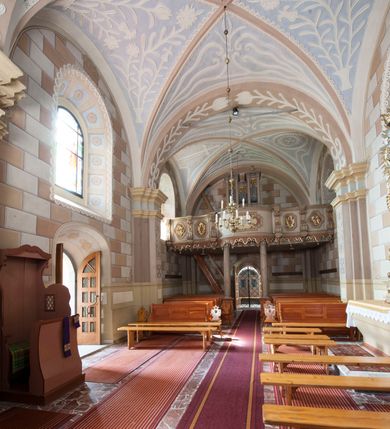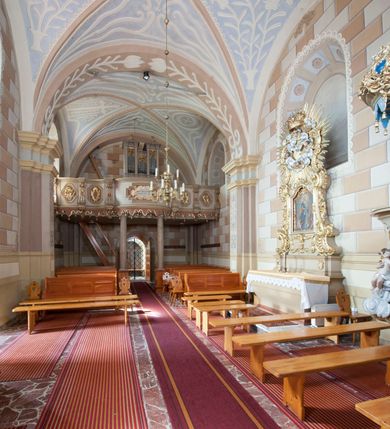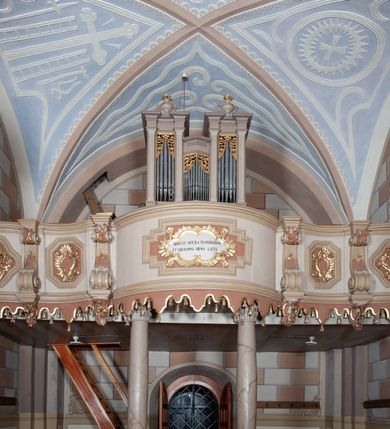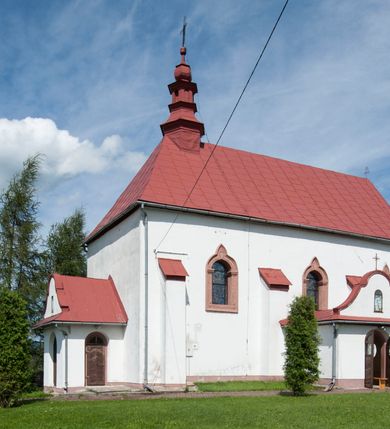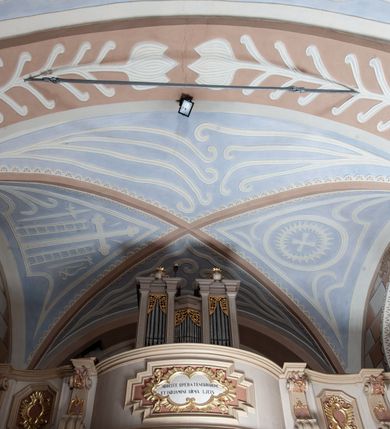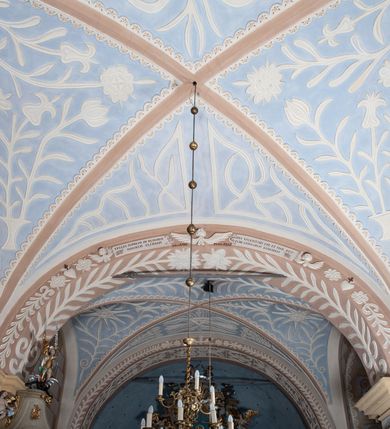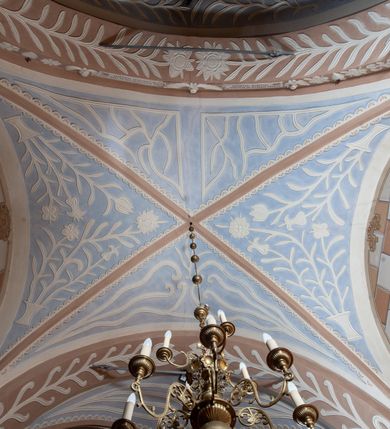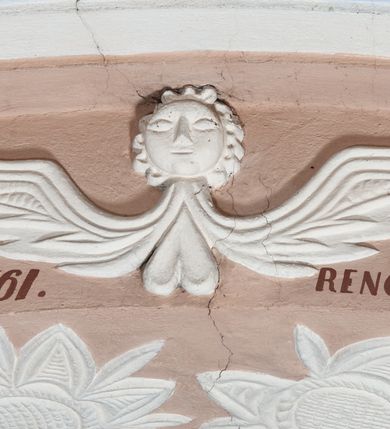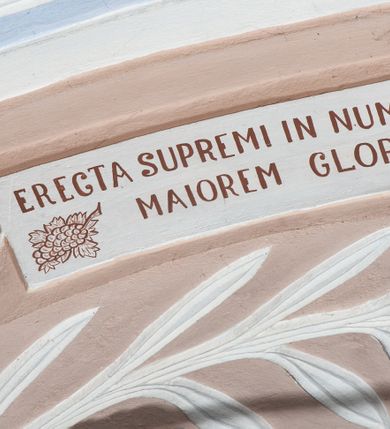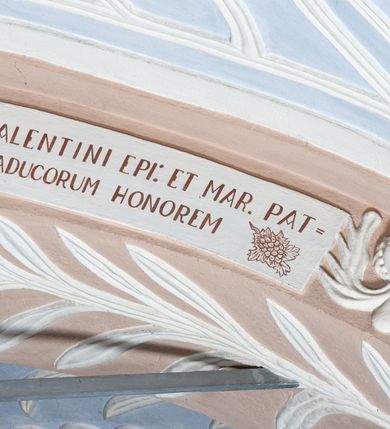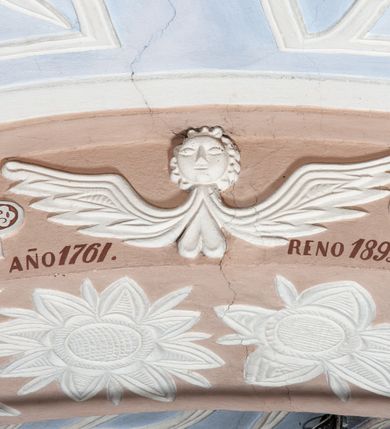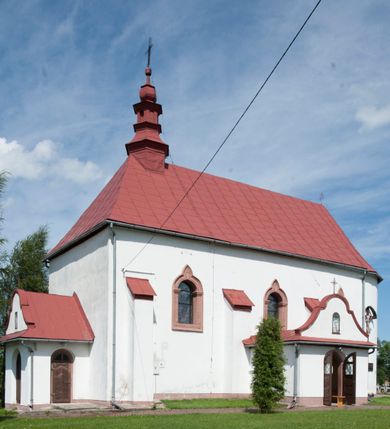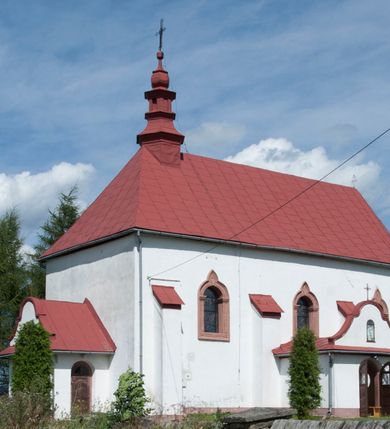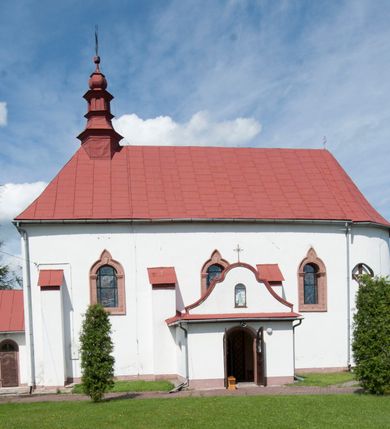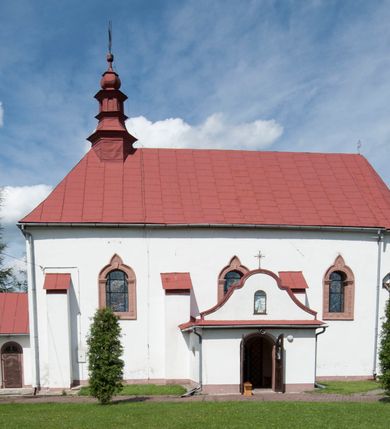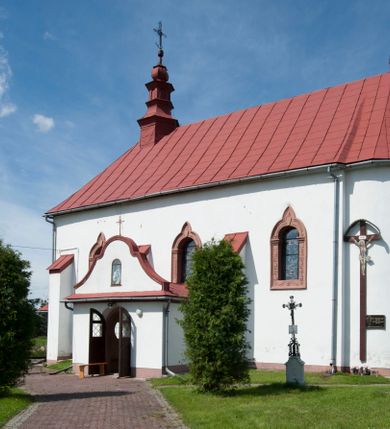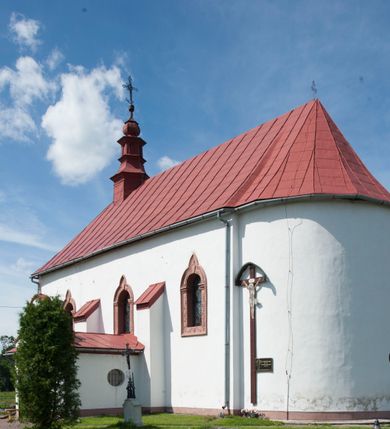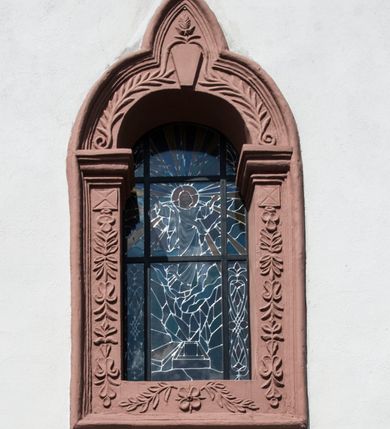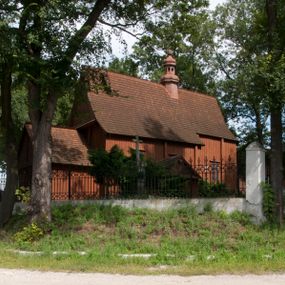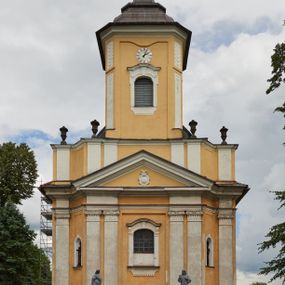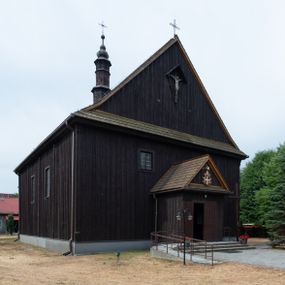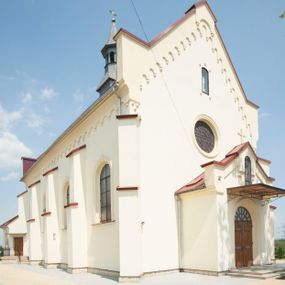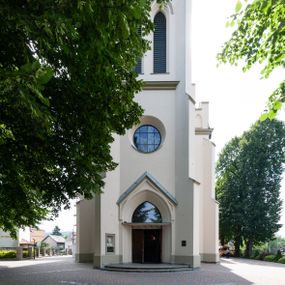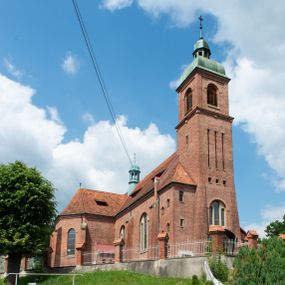
St. Valentine's church in Krempany
Place
Krempachy
Parish
St. Martin's parish in Krempachy
Identifier
DZIELO/19491
Amount
1
Catalogue note author
Maria Działo
History of work
St. Valentine's church in Krempany was built in 1761 in place of a wooden temple. The previous one, according to lore based probably on the date on the triptych, was built in 1516. Construction of the present temple began when Wincenty Pawlak (1753–1759) was the parish priest, which was noted in the parish chronicle: "Sub Joanne Pavlak jacta sunt fundamenta murata Cappellae Si. Valentini”. The final date for the church's construction is assumed to be the year of the last expenses recorded in the parish chronicle. In 1796, the temple gained a new roof and a spirelet. Stained glass windows from Igor Tverdokchlib's studio were fitted in the windows. They depict the Risen Christ and the Pietà. The last general renovation of the church was carried out in 2002.
The high altar was probably built shortly after the church was erected in 1761. The parish chronicle states that shortly after the altars were made, "it was regrettable that in such a short time all the silver on the altars, the loft and armchair turned black". The altar gates are still in use. During the church fair of St. Valentine (14 February), the faithful have the opportunity to circle around the altar with lit candles and recite prayers for the sick. The central part of the triptych from 1516, depicting the Holy Conversation, was placed in the middle of the altar, and the wings of the triptych were hung on the walls of the chancel. A particularly interesting altar is located in the nave of the temple and was built in 1772. In the main area, there is a painting of Our Lady of the Immaculate Conception from the second half of the 18th century. According to the pre-war inventory and "The Catalogue of the Monuments of Art in Poland" from 1953, a painting of Bl. Kinga from 1772 could also be found in the altar. However, in the 70s of the 20th century the painting went missing in unexplained circumstances. According to one of the researchers, it was moved to the parish church of St. Martin in Krempachy. The painting depicted Blessed Kinga in royal attire, covered with an ermine coat fastened with a brooch and with a crown on her head. On the table in front of her lay royal insignia and a lump of salt with a ring. The altar with both paintings was mentioned in the episcopal visitation of 1832 „altera est ara. collateralis Immaculatae Conceptionis B. M. V. et es Cunegundis”. The altar is adorned with a rocaille ornament, characteristic of the art of the third quarter of the 19th century. It shows the richness of forms of the Rococo style manifested in the splendour of ornament and gilded texture. The richness of ornamental and sculptural decoration is characteristic of the Spiš art, in which it dominates over the painting decoration. The work reveals the artist's unusual invention, which goes beyond the known pattern of aedicula type reredoses with supports. Due to its extraordinary form, some researchers refer to it as a "feretron" altar. Apart from the splendour of the ornament, the dominant element in the structure of the altar is a huge aureole crowning the reredos, with a size corresponding to the height of the entire tier. This solution was used in the 18th century in works of small architecture (pulpits, altars, portals, etc.). Its genesis dates back to the works of Gianlorenzo Bernini, although it quickly spread in Poland as well. One of the first artists in Małopolska to use radiant aureole in the altar finial of small architecture was the sculptor Antoni Frączkiewicz. On the northern wall of the church, there is a pulpit from the third quarter of the 18th century. On the back of the pulpit there is a painting by Szymon Kawalski depicting St. John of Nepomuk.
Abstract
St. Valentine's church in Krempany was built in 1761 in place of a wooden temple. Inside there is the high altar, which was probably built shortly after the church was erected. The central part of the triptych from 1516, depicting the Holy Conversation, was placed in the middle of the altar, and the fields of the triptych were hung on the walls of the chancel. A particularly interesting altar is located in the nave of the temple and was built in 1772. In the main area, there is a painting of Our Lady of the Immaculate Conception from the second half of the 18th century. The altar is adorned with a rocaille ornament, characteristic of the art of the third quarter of the 19th century. It shows the richness of forms of the Rococo style manifested in the splendour of ornament and gilded texture. The richness of ornamental and sculptural decoration is characteristic of the Spiš art, in which it dominates over the painting decoration. The work reveals the artist's unusual invention, which goes beyond the known pattern of aedicula type reredoses with supports. Due to its extraordinary form, some researchers refer to it as a "feretron" altar. Apart from the splendour of the ornament, the dominant element in the structure of the altar is a huge aureole crowning the reredos, with a size corresponding to the height of the entire tier. This solution was used in the 18th century in works of small architecture (pulpits, altars, portals, etc.). Its genesis dates back to the works of Gianlorenzo Bernini, although it quickly spread in Poland as well. On the northern wall of the church, there is a pulpit from the third quarter of the 18th century. On the back of the pulpit there is a painting by Szymon Kawalski depicting St. John of Nepomuk.
Other works from this place
Other works from this year
Similar works
By title
By category
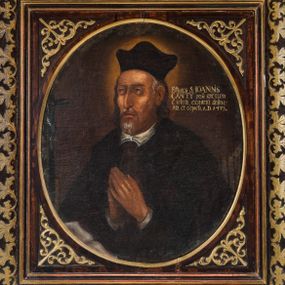
St. John Cantius
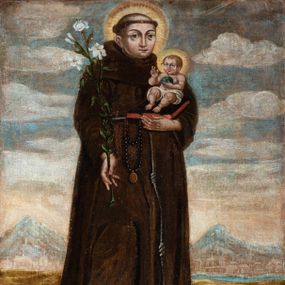
St. Anthony of Padua
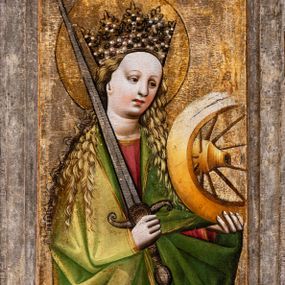
A front left wing of the old triptych of Our Lady of the Immaculate Conception
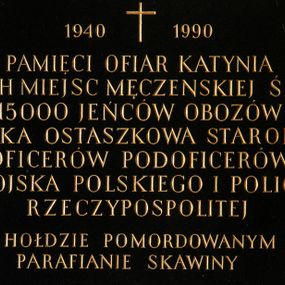
A plaque commemorating the victims of extermination
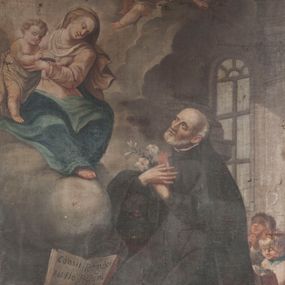
Adoration of Our Lady by St. Joseph Calasanz
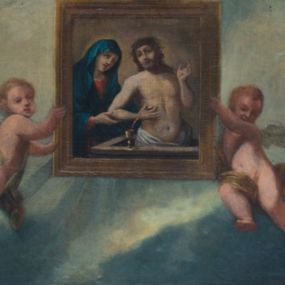
Adoration of painting "Misericordia Domini" by the Polish saints
How to cite?
Maria Działo, "St. Valentine's church in Krempany", [in:] "The Sacred Lesser Poland Heritage", 2026, source: https://sdm.upjp2.edu.pl/en/works/st-valentines-church-in-krempany
